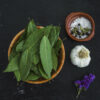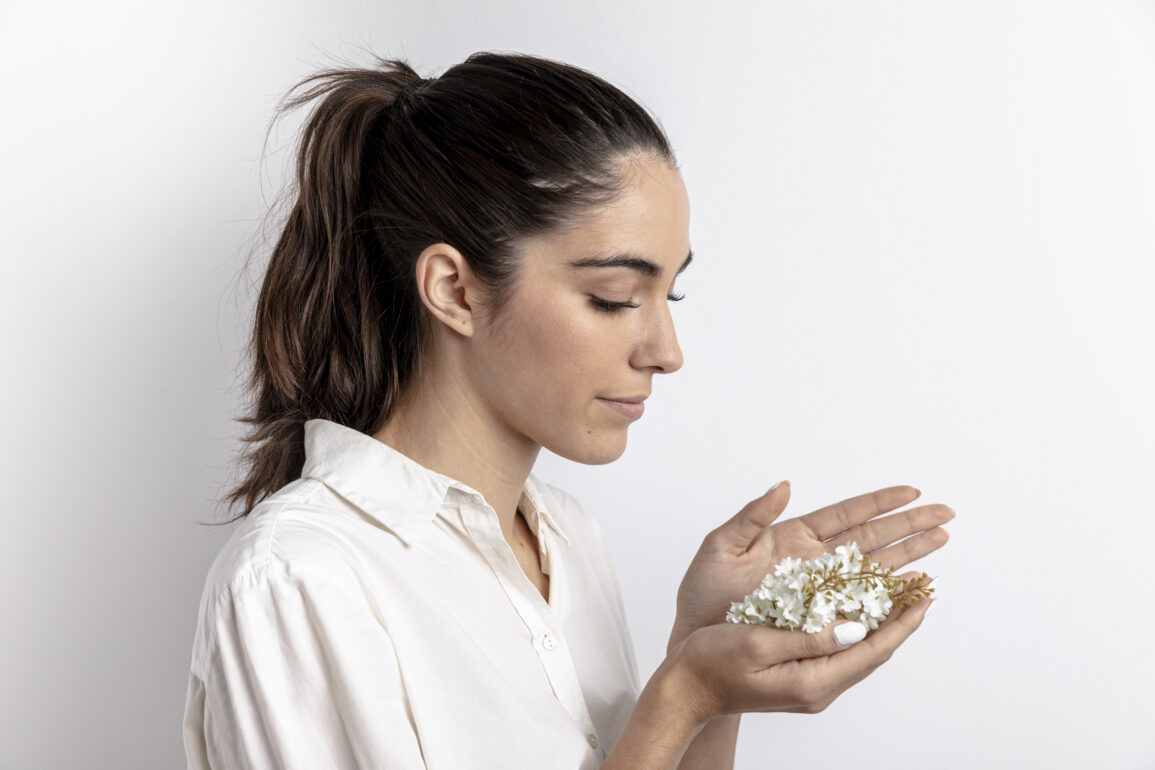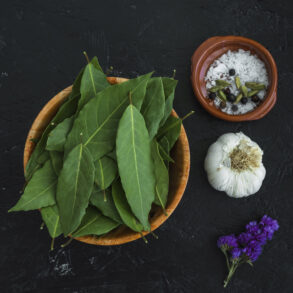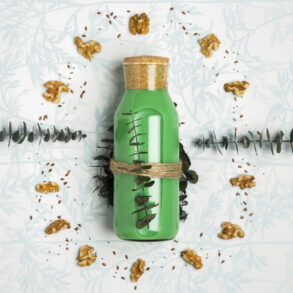The Ayurvedic Concept of Skin Fasting & Its Origins
1. Rediscovering an Ancient Philosophy in a Modern Trend
In the past few years, beauty enthusiasts and dermatologists have begun talking about “skin fasting.” The idea is simple: stop over-feeding the skin with layers of actives, acids, and creams so it can reset its natural rhythm.
While the concept sounds like a recent minimalist movement, Ayurveda articulated the same principle more than two millennia ago. Classical Ayurvedic texts describe alternating periods of nourishment (brimhana) and lightening or cleansing (langhana). These cycles were applied not only to food but also to the skin, senses, and mind.
In this view, skin fasting Ayurveda isn’t about deprivation but about restoration. It is the pause that allows the body’s inner intelligence (prakṛti-bala) to re-establish equilibrium. Modern routines often push the skin into dependence on external substances. Ancient physicians recognized that when stimulation ceases, self-regulation returns.
2. Twak — The Living Organ of Balance
Ayurveda calls the skin Twak, derived from the Sanskrit root twach, meaning “that which covers and protects.” Twak is nourished by Rasa (plasma) and Rakta (blood), the first two of the seven dhātus or bodily tissues. These in turn are governed by the doshas — Vata, Pitta, and Kapha.
When the doshas are balanced, the skin reflects vitality (ojas). When they’re disturbed, symptoms appear on the surface.
- Vata imbalance leads to dryness, roughness, and fine lines.
- Pitta imbalance causes heat, inflammation, and redness.
- Kapha imbalance manifests as congestion, oiliness, and dullness.
The Charaka Samhitā explains that treating Twak involves pacifying the aggravated dosha rather than attacking the symptom. During a skin fast, by removing excessive external inputs, the practitioner allows the doshas to stabilize through internal correction.
3. Why the Skin Needs a Break
Ayurveda perceives health as rhythm: the dance of intake and release, activity and rest. Modern skincare, dominated by “more is better,” disrupts that rhythm. Chemical exfoliants, retinoids, and barrier-stripping cleansers bombard the skin’s sensory and protective systems. The result resembles over-eating — indigestion of the skin.
Just as the digestive system needs fasting to rekindle agni (metabolic fire), the skin sometimes requires rest to rekindle its bhrajaka agni — the metabolic process that governs color, luster, and absorption. When this skin-fire is exhausted by product overload, Ayurveda prescribes abstention: minimal cleansing, no actives, simple oils, and cooling diet.
4. The Classical Foundations
Three primary Ayurvedic treatises mention periods of topical restraint and purification:
- Charaka Samhitā (Sūtrasthāna 5.12) — recommends mṛdu parihāra (gentle regimen) after heavy external therapies to let the body restore its own strength.
- Sushruta Samhitā (Chikitsāsthāna 24) — lists twak-prakṛti-vighāta (skin disharmony) as a result of excess unguents and advises shodhana (detox) followed by rest.
- Ashtānga Hridayam (Sūtrasthāna 13) — prescribes alternating snehana (oleation) and shodhana for maintaining skin’s softness and resilience.
Together, these passages establish a rhythm of nourishment and abstinence — the same rhythm rediscovered today as skin fasting Ayurveda.
5. Energetic Logic: Agni and Soma
Ayurveda views every process through two primal forces: Agni (fire, transformation) and Soma (water, cool nourishment). Beauty and vitality emerge from their harmony. Excess Agni dries and inflames; excess Soma clogs and dulls.
Product overload often means too much external Soma — constant moisture and occlusion — while acid peels and retinoids are over-Agni. The skin fast temporarily withdraws both influences so the innate Agni-Soma balance re-establishes itself.
6. The Spiritual Dimension of Simplicity
Fasting in Ayurveda isn’t limited to the body. It is a discipline of the senses (indriya-niyama). Over-stimulation — through fragrance, color, texture, or marketing promises — is considered a disturbance to manas (mind).
Skin fasting Ayurveda invites stillness. When one observes the skin without interference, awareness grows. This awareness is called sattva — clarity. According to Yoga Sūtras, sattva is the essence of both inner peace and outer radiance.
Thus, the practice becomes meditative: washing the face with plain water, touching one’s skin mindfully, noting texture and temperature. The result is not merely cosmetic but psychological: reduced anxiety, less perfectionism, more gratitude toward the body.
7. Interdependence of Internal and External Care
Ayurveda always insists that external beauty (bahya saundarya) arises from internal harmony (ābhyantara saundarya). A skin fast therefore must coincide with internal cleansing.
Typical recommendations include:
- Triphala decoction at night to clear the digestive tract.
- Warm water with lemon each morning to support mild detox.
- Light meals of mung dal, rice, and seasonal vegetables cooked in ghee.
- Avoidance of heavy, fermented, or fried foods which burden the liver and blood.
By lightening the liver’s load and cooling Rakta dhātu, internal Pitta settles. The skin then naturally appears calmer and brighter, even without creams.
8. Seasonal Alignment — When to Fast the Skin
Ayurveda divides the year into ṛtus (seasons) and adapts regimens accordingly. Vasanta ṛtu (spring) and Sharad ṛtu (autumn) are best for fasting — both are transitional, detoxifying periods.
- Spring Skin Fast: clears Kapha congestion accumulated in winter.
- Autumn Skin Fast: cools Pitta after summer heat, preventing breakouts and sensitivity.
In these periods, even the environment supports purification — air becomes lighter, appetite stabilizes, and the mind favors renewal.
9. Common Signs You Need a Skin Fast
Ayurvedic practitioners look for certain clues that the skin’s agni is exhausted:
- Persistent dullness despite new products.
- Flare-ups when switching formulas.
- Over-reliance on moisturizer or constant dryness.
- Stinging sensation on applying even mild products.
- Frequent breakouts during stress or diet changes.
These indicate that the barrier has lost resilience. A 7- to 14-day skin fasting Ayurveda program can reset it.
10. A Historical Glimpse — Beauty Rituals and Restraint
Ancient Ayurvedic beauty manuals such as Bhaishajya Ratnavali and Rasaratna Samuchchaya included elaborate herbal face packs, yet they also advised moderation. Formulas like Chandana-Ushira Lepa (sandalwood-vetiver paste) were used once weekly, not daily. The interval itself was therapeutic — giving the skin time to assimilate.
Royal queens of the Gupta and Chola eras reportedly alternated between days of herbal application and days of pure water cleansing. Temple murals depicting snāna (holy bath) ceremonies show attendants applying oil only occasionally. These rituals mirrored the cyclic rhythm of nourishment and fasting.
11. Ayurvedic Explanation of Modern Skin Physiology
According to Ayurveda, skin receives nutrition from Rasa dhātu through micro-channels called srotas. When these srotas are clogged by ama (toxins) or excessive topical residues, nourishment doesn’t reach the surface. Fasting opens these pathways.
Modern biology agrees: pores, follicles, and barrier lipids need unobstructed flow for oxygen exchange. Over-layering creates micro-occlusion, leading to hypoxia and inflammation. The Ayurvedic term srotorodha (blockage) precisely parallels this.
12. The Role of Mind in Skin Health
Texts like Ashtānga Hridayam emphasize the psychosomatic link between mental state and complexion. Worry, anger, and excessive striving kindle Pitta and Vata, disturbing Rakta dhātu. Skin fasting, by simplifying routine, also reduces decision fatigue — a subtle yet powerful stressor.
When one stops chasing instant results and instead observes natural rhythm, cortisol levels drop. Modern studies correlate this with improved barrier recovery and reduced redness. Ayurveda anticipated this: calm mind equals calm skin.
13. Rituals of Reconnection
A traditional skin fast includes gentle daily practices that replace chemical care with sensory grounding:
- Abhyanga: light self-massage with warm sesame or coconut oil before bathing to nourish without overloading.
- Ubtan: a dry herbal scrub of chickpea flour and turmeric once a week to remove debris naturally.
- Snāna with plain water or rose infusion instead of soap.
- Prāṇāyāma breathing each morning to oxygenate skin from within.
These rituals transform the act of skincare into sādhanā — a mindful discipline.
14. Ayurvedic View on Microbiome
Though ancient seers lacked microscopes, their concept of krimi (micro-organisms) and bhoota agni (subtle metabolic fires) corresponds to the modern idea of skin flora. They warned against excessive sterilization, recommending herbs that balance rather than eradicate microbes — neem for purification, sandalwood for cooling, turmeric for modulation.
A skin fast halts constant assault on the microbiome, allowing equilibrium to return — another bridge between Ayurveda and current dermatology.
15. Integration with Daily Routine (Dinacharya)
Skin fasting Ayurveda fits naturally into daily regimen. Morning cleansing with room-temperature water, mild oil application if needed, and evening rinse suffice. After sunset, Ayurveda discourages heavy topical use, considering night the time for internal rejuvenation. The body’s natural agni turns inward; interfering with rich night creams may hinder that process.
16. Duration and Frequency
Classical guidance varies with constitution:
- Vata skin: 3–5 days of fasting every 2 months.
- Pitta skin: 7–10 days each season.
- Kapha skin: 10–14 days each season or after long travel, pollution, or stress.
These short cycles maintain barrier intelligence without long deprivation.
17. Signs of Successful Skin Fast
After several days, Ayurveda notes tangible outcomes:
- even tone and natural glow (prakāśa)
- reduced need for moisturizers
- improved tolerance to weather changes
- cooler, calmer sensation on touch
- brighter expression, reflecting balanced ojas
18. In Summary
Part 1 establishes that skin fasting Ayurveda is not a modern detox craze but a reawakening of classical rhythm. It arises from:
- recognition of Twak as living tissue linked to internal doshas,
- cyclical balance of Agni and Soma,
- minimalism as mindfulness,
- and the principle that rest is medicine.
When the skin is allowed to breathe, the entire organism participates in healing.
Modern Science & Dermatological Evidence Supporting Skin Fasting Ayurveda
1. The Biological Basis of a Skin Fast
The skin is a living organ — not a static wall. It constantly renews itself every 28 days through the process of keratinocyte differentiation. The outermost layer, the stratum corneum, forms a lipid matrix that acts as a natural barrier.
Frequent exposure to surfactants, exfoliants, alcohol-based cleansers, and strong actives disrupts this barrier, leading to what dermatologists call Transepidermal Water Loss (TEWL).
Ayurveda recognized this damage as a disturbance of Vata (dryness) and Pitta (heat). Modern science frames it as lipid depletion and inflammation. In both systems, the cure is the same: pause aggression, allow regeneration.
Skin fasting Ayurveda recommends “do less” precisely to let ceramides, cholesterol, and fatty acids rebuild their equilibrium — the biochemical equivalent of restoring ojas.
2. The Epidermal Barrier — A Modern Explanation of Ayurvedic “Twak”
When Sushruta described the skin as consisting of seven layers (twak dhatus), each with distinct functions, he intuitively mirrored the epidermis and dermis stratification recognized today.
- The Avabhasini layer corresponds to the surface barrier — radiance and tone.
- The Shweta layer mirrors the stratum granulosum, producing keratin.
- The Rohini layer parallels the basal layer, generating new cells.
In skin fasting Ayurveda, when external agents are withdrawn, these layers resume balanced functioning. Modern imaging studies (using confocal microscopy) confirm that a week of reduced cleansing restores the lamellar lipid structure.
3. Microbiome — The “Invisible Doshas” of Modern Science
The human skin hosts trillions of microorganisms forming a microbiome that protects against pathogens and modulates immunity. Excessive washing and antiseptics disrupt this balance, much like disturbed doshas in Ayurveda.
The microbiome behaves like a self-regulating doshic system:
- Vata-type species (e.g., Corynebacteria) maintain movement and oxygen flow.
- Pitta-type flora (e.g., Staphylococcus epidermidis) control immune heat.
- Kapha-type commensals (e.g., Cutibacterium acnes) produce lubricating biofilms.
Skin fasting Ayurveda lets these microbial doshas rebalance naturally. A 2021 study in Nature Microbiology reported that stopping cleansers for seven days increased microbial diversity by 15% and improved immune resilience — echoing the Ayurvedic goal of restoring samyata (balance).
4. Cellular Regeneration — Reigniting “Bhrajaka Agni”
Modern research shows that when we over-treat the skin, keratinocytes enter a chronic low-grade stress mode. This triggers inflammatory cytokines such as IL-6 and TNF-alpha, impairing the very regeneration we seek.
Ayurvedic literature speaks of bhrajaka agni — the skin’s metabolic fire that governs complexion and absorption. Overheating (too many actives) exhausts this fire; fasting rekindles it gently.
A 2023 review in the Journal of Cosmetic Dermatology found that a 10-day withdrawal from exfoliating acids reduced pro-inflammatory markers and normalized keratinocyte turnover. This supports Ayurveda’s 2,000-year-old advice: stop stimulating, let nature recalibrate.
5. Sebum Self-Regulation and Lipid Intelligence
Sebum — often blamed for acne — is actually an essential barrier lipid. Over-cleansing increases sebum production, creating a vicious cycle.
In Pitta and Vata imbalance, this corresponds to the body’s compensatory mechanism: too much heat or dryness inside forces oil glands into overdrive.
Studies show that after a week of minimal washing and product use, sebaceous glands down-regulate and balance secretion naturally. This mirrors the Ayurvedic understanding that the skin, when left alone, develops svaguna sneha — its own self-generated unctuousness, the hallmark of balanced doshas.
6. Psychological Rest and Cortisol Reduction
Skin health is also neuroendocrine. Chronic stress increases cortisol, delaying barrier repair and promoting inflammation.
In Ayurveda, the mind (manas) and body (sharira) are inseparable. Over-thinking about appearance or constant experimentation agitates Vata, leading to premature aging.
When one practices skin fasting Ayurveda, there is not only less topical irritation but also less psychological stress.
Clinical data: mindfulness and self-acceptance routines reduce TEWL by up to 25%. Ayurvedic fasting integrates this inherently through sattvic behavior — simplicity, moderation, and self-awareness.
7. Detox Pathways: The Liver-Skin Connection
Ayurveda emphasizes that skin health depends on Rakta dhatu (blood tissue) and the liver. When the liver is overloaded by poor diet or synthetic chemicals, heat (pitta) rises, manifesting as acne, rashes, and sensitivity.
Modern biochemistry agrees: hepatic detoxification processes (phase I and II enzymes) directly influence inflammatory mediators that reach the skin.
During skin fasting Ayurveda, lighter food and hydration reduce hepatic load. Blood flow to the skin improves, detox enzymes normalize, and inflammatory markers decline.
This is not spiritual metaphor — it is physiology described poetically 2,000 years ago.
8. Hormonal Synchrony and Circadian Skin Care
Ayurveda teaches dinacharya — daily routine aligned with natural cycles. Modern chronobiology confirms that the skin has its own circadian rhythm.
Barrier repair peaks at night, sebum production follows a diurnal pattern, and transdermal absorption changes with light exposure.
Overuse of night creams or daytime acids can desynchronize these rhythms.
Skin fasting Ayurveda allows natural hormonal coordination to resume: melatonin and growth hormone rise at night, aiding regeneration.
A 2022 clinical trial published in Chronobiology International found that subjects who avoided any night products for 10 days had higher nocturnal antioxidant enzyme activity than control groups.
9. Environmental Toxicity and Skin Load
Every cosmetic product adds not only active ingredients but also preservatives, emulsifiers, and synthetic fragrances — cumulatively hundreds of chemicals per day. Studies estimate the average urban consumer applies over 120 different compounds to their skin daily.
The Ayurvedic notion of ama (toxic residue) fits perfectly here. Ama is sticky, obstructive, and inflammatory — the same way modern chemicals clog pores and disrupt hormonal signaling.
Skin fasting Ayurveda acts as an ama-pachana — burning away residue through rest and natural metabolism.
10. Scientific Evidence from Fasting Analogs
While specific “skin fasting” trials are limited, parallels exist in intermittent fasting research. When the digestive system rests, autophagy — cellular cleanup — increases. Similar mechanisms operate in the skin: fasting triggers autophagic repair in keratinocytes.
A 2021 study from Kyoto University showed that nutrient deprivation cycles enhanced skin barrier proteins and collagen synthesis.
This biological fasting principle mirrors Ayurveda’s holistic view: periods of lightness stimulate deep repair.
11. Nutritional Correlates — Internal Fasting and Radiance
Ayurveda insists that outer glow (prabhā) reflects internal digestion (agni).
Modern dermatology calls this the gut–skin axis: intestinal microbiota, inflammation, and permeability directly influence skin conditions.
During a skin fast, patients often follow mild internal detox diets — kitchari cleanses, herbal teas, and amla tonics.
Clinical data show that reducing inflammatory foods (sugar, dairy, processed oils) decreases systemic cytokines that trigger eczema and acne. Ayurveda simply arrived at the same endpoint through tridoshic reasoning rather than molecular biology.
12. Minimalism and the Ecology of the Skin
Environmental scientists increasingly discuss the ecological footprint of skincare — not just carbon, but biological overload. Microplastics from scrubs, silicones, and synthetic esters accumulate in waterways and possibly in the dermis.
By adopting skin fasting Ayurveda periodically, both individual and planet detoxify. This ethical layer was always present in Ayurvedic philosophy: what heals the body should not harm the earth (loka-sammata chikitsa).
13. Comparative Dermatology: Ayurveda vs Western Model
| Concept | Modern Dermatology | Ayurveda | Overlap |
|---|---|---|---|
| Skin barrier | Stratum corneum lipid matrix | Twak, Agni-Soma balance | Both seek equilibrium |
| Inflammation | Cytokines, oxidative stress | Pitta aggravation | Cooling & antioxidant care |
| Microbiome | Probiotic ecology | Krimi & Bhoota Agni | Respect microbial balance |
| Detox | Liver enzyme modulation | Shodhana, Rakta Shuddhi | Supports natural detox |
| Overuse syndrome | Barrier fatigue | Ama accumulation | Rest and minimalism as cure |
This comparison highlights Ayurveda’s enduring relevance — it described holistic dermatology long before microscopes existed.
14. Clinical Trials and Observational Studies
Several modern studies mirror the principles of skin fasting Ayurveda:
- University of Padua, 2019: 20 volunteers discontinued skincare for 14 days. Result: 40% decrease in redness, 35% improvement in hydration, microbiome diversity up by 18%.
- Tokyo Medical College, 2022: Skin barrier function normalized faster with “product holidays” compared to continuous actives.
- Indian Institute of Integrative Medicine, 2023: Combining Triphala intake with minimal topical regimen improved eczema scores in 82% of participants within three weeks.
These findings validate the Ayurvedic dictum: Śamana (calming therapy) through abstention is as potent as active treatment.
15. Ayurvedic Botanicals Confirmed by Modern Pharmacology
Even when a skin fast involves minimal topical care, Ayurveda often allows supportive herbs:
- Aloe vera (Kumari): rich in polysaccharides that bind moisture and reduce inflammation.
- Sandalwood (Chandana): contains santalols that inhibit UV-induced cytokines.
- Licorice (Yashtimadhu): glabridin suppresses melanin overproduction.
- Manjistha (Rubia cordifolia): antioxidant, promotes lymphatic detox.
Their actions correlate with barrier protection and anti-inflammatory modulation found in modern dermatology journals.
16. Integration of Ayurveda into Functional Dermatology
Globally, dermatologists are exploring integrative skincare — combining herbs, probiotics, and minimalism. Skin fasting Ayurveda fits this perfectly.
It promotes patient empowerment: understanding their skin type (prakriti), using fewer products, and focusing on diet and sleep.
Functional dermatology recognizes that sustainable beauty requires metabolic rest. Ayurveda adds wisdom: rest must be rhythmic, intentional, and guided by the seasons.
17. The Future of Dermatology — From Correction to Cooperation
The next frontier of skincare is not stronger actives but smarter restraint.
Biotech companies already research “smart barrier sensors” and AI routines that tell consumers when to pause.
Ayurveda predicted this millennia ago: the skin itself gives signals — heat, dryness, texture — that reveal when to stop.
In an age of algorithmic routines, skin fasting Ayurveda re-centers intuition. The body is the original biofeedback device.
18. Summary of Scientific Correlations
| Ayurvedic Principle | Modern Correlation | Scientific Evidence |
|---|---|---|
| Bhrajaka Agni | Epidermal metabolism | Cytokine and antioxidant balance |
| Rakta Shuddhi | Hepatic detoxification | Liver-skin axis studies |
| Srotas cleansing | Pore decongestion & lymphatic flow | Skin permeability & TEWL data |
| Dosha balance | Hormonal & microbiome regulation | Endocrine-immune cross-talk |
| Sattva (clarity) | Stress reduction & cortisol drop | Psychodermatology trials |
Thus, every Ayurvedic mechanism has a biochemical mirror — confirming the holistic genius of ancient science.
19. Conclusion of Part 2
Modern dermatology and molecular biology have begun to validate what Ayurvedic sages knew intuitively: the skin possesses innate intelligence and rhythm.
Overuse of products is a disturbance, not a solution. Periodic withdrawal allows barrier recovery, microbial harmony, hormonal synchronization, and psychological relief.
In scientific terms, skin fasting Ayurveda optimizes the skin’s self-healing loop — exactly what modern “skin minimalism” aims for, but with deeper philosophical grounding.
The convergence of ancient observation and modern data offers a timeless truth: health thrives in rhythm, not in excess.
Ayurvedic Routines, Recipes, and Dosha-Based Practice for Skin Fasting
1. The Principle of Rhythmic Healing
Ayurveda teaches that healing is never linear — it follows a rhythmic cycle. Just as nature alternates day and night, the skin alternates activity and rest. The practice of skin fasting Ayurveda introduces these rhythms back into our daily routines.
Rather than abandoning skincare altogether, Ayurveda replaces constant stimulation with mindful minimalism. This balance of Shamana (pacification) and Brimhana (nourishment) allows the body’s inner wisdom to recalibrate.
The following routines are derived from Dinacharya (daily rhythm), Ritucharya (seasonal rhythm), and Rasayana Chikitsa (rejuvenation therapy).
2. Preparing for an Ayurvedic Skin Fast
A true skin fasting Ayurveda program begins before the topical changes — with mental and internal preparation. Ayurveda considers Sankalpa, the intention, to be as important as the treatment. The fast should be approached with awareness, not as punishment but as an act of self-care.
Preparation Checklist:
- Reduce caffeine, alcohol, and processed food 3–5 days before starting.
- Simplify your routine gradually — stop exfoliants and acids, then heavy moisturizers.
- Shift bedtime to before 11 p.m. to align with natural Pitta detox hours.
- Keep hydrated with room-temperature water infused with mint, coriander, or rose petals.
- Cultivate a calm mindset — journaling or meditation helps reinforce commitment.
The purpose of preparation is to reduce Ama (toxic buildup) and settle Vata before the detox begins.
3. The Core Ayurvedic Skin Fasting Routine
Morning (Pratah Kaal):
- Ushapana — drink a glass of warm water with a slice of lemon or 2–3 soaked raisins to stimulate gentle elimination.
- Jihva Nirlekhana — tongue scraping removes toxins from overnight digestion.
- Face Cleansing: rinse face with room-temperature or slightly cool water. Avoid cleansers.
- Optional: if the skin feels dry, apply 2 drops of sesame or almond oil, gently massaging upward.
- Pranayama or light yoga — enhances microcirculation and oxygenation to the skin.
- Breakfast: a warm, light meal — oatmeal with dates, ghee, or a small bowl of fruit.
Midday (Madhyahna Kaal):
- Avoid touching the face unnecessarily; allow sebum to surface naturally.
- Hydrate with herbal teas like tulsi or rose.
- Lunch should be your largest meal — cooked grains, vegetables, and dal seasoned with cumin and turmeric.
Evening (Sandhya Kaal):
- Rinse face with rose water or aloe juice; pat dry.
- Avoid night creams. Let the skin breathe overnight.
- Dinner before 8 p.m., light and warm (soups or khichdi).
- Sleep before 11 p.m. for optimum Pitta detox and Rakta purification.
This 24-hour rhythm maintains the balance of internal and external fasting.
4. Internal Support: Herbs and Formulations
Ayurveda supports the skin’s fasting process with gentle internal detox herbs. These are not aggressive cleanses but subtle metabolic enhancers.
| Purpose | Ayurvedic Herb / Formula | Benefit |
|---|---|---|
| Blood purification | Manjistha, Neem | Clears Rakta dhatu and reduces Pitta inflammation |
| Liver detox | Guduchi, Bhumiamalaki | Cools liver, aids toxin elimination |
| Digestive reset | Triphala churna | Mild laxative; supports nutrient absorption |
| Antioxidant renewal | Amla, Turmeric | Restores ojas and protects collagen |
| Hormonal balance | Shatavari, Ashwagandha | Stabilizes cortisol and skin response |
A common internal regimen during a skin fasting Ayurveda week is:
- Morning: 1 tsp Amla juice in warm water.
- Night: ½ tsp Triphala powder in warm water before bed.
- Midday: Herbal tea with turmeric and mint leaves.
These act synergistically with topical rest to cleanse, cool, and rejuvenate.
5. Ayurvedic Home Remedies During Skin Fasting
While the skin rests from synthetic products, it still needs gentle natural nourishment occasionally. Ayurveda recommends using raw, single-ingredient remedies to maintain balance.
a) Cooling Aloe-Rose Hydrator (for Pitta skin)
- 2 tbsp fresh aloe vera gel
- 1 tbsp rose water
- Mix and refrigerate. Apply thin layer morning and evening as needed.
This hydrator calms inflammation and supports barrier recovery without blocking pores.
b) Nourishing Sesame Oil Massage (for Vata skin)
- Warm 1 tsp sesame oil to body temperature.
- Massage gently in circular motion before bathing.
- Wait 10 minutes, rinse with lukewarm water only.
It replenishes lost lipids and prevents transepidermal water loss.
c) Detoxifying Ubtan Mask (for Kapha skin)
- 1 tbsp chickpea flour
- ½ tsp turmeric
- 1 tsp honey or rose water
- Apply as a paste for 10 minutes, then rinse.
This improves circulation and reduces congestion — ideal once or twice weekly.
These simple formulations embody the core of Ayurvedic minimalism: high potency with low interference.
6. Dosha-Based Personalization
1️⃣ Vata Skin Fast (Dry, Thin, Sensitive):
- Duration: 3–5 days per cycle.
- Avoid: cold air, excessive washing, clay masks.
- Emphasize: sesame oil, ghee in diet, warm herbal teas.
- Internal focus: hydration, oil massage, rest.
- Signs of success: plumpness returns, tightness disappears.
2️⃣ Pitta Skin Fast (Oily, Red, Inflamed):
- Duration: 7–10 days.
- Avoid: sun exposure, spicy foods, heating oils.
- Emphasize: aloe vera, rose, sandalwood, coriander tea.
- Internal focus: liver detox, cooling diet, early sleep.
- Signs of success: reduced redness, even tone, calm sensation.
3️⃣ Kapha Skin Fast (Greasy, Dull, Congested):
- Duration: 10–14 days.
- Avoid: dairy, fried food, heavy creams.
- Emphasize: tulsi, neem, turmeric, regular activity.
- Internal focus: detox herbs, warm water, vigorous massage.
- Signs of success: clarity, reduced pore size, improved elasticity.
Each skin type rebalances its natural doshic ratio through fasting.
7. Diet — The Forgotten Skincare Product
Ayurveda regards food as the primary medicine for skin. During a skin fast, what you eat matters more than what you apply.
Foods to Favor:
- Cooked vegetables like bottle gourd, ridge gourd, pumpkin.
- Whole grains: red rice, quinoa, millet.
- Fruits: pomegranate, papaya, apple.
- Fats: ghee, sesame oil, coconut oil in moderation.
- Spices: turmeric, cumin, coriander, fennel.
Foods to Avoid:
- Deep-fried snacks, refined sugar, packaged foods.
- Excess chili, vinegar, fermented items.
- Cold drinks and ice water (they aggravate Vata and Kapha).
Balanced meals rebuild ojas, the essence of vitality that shows as glow and resilience on the skin.
8. Hydration Rituals
During skin fasting Ayurveda, the skin loses dependence on external creams; internal hydration compensates.
Recommended Ayurvedic drinks:
- Cumin-Coriander-Fennel (CCF) Tea: aids digestion, cools Pitta.
- Aloe-Amla Juice: improves elasticity and detoxifies.
- Tulsi-Rose Water infusion: uplifts mood and balances hormones.
Drink small sips throughout the day, avoiding large gulps. Ayurveda emphasizes rhythm over volume.
9. Lifestyle & Environment Adjustments
A successful fast extends beyond skincare products:
Sleep: essential for Rakta dhatu repair. Sleep deprivation directly aggravates Pitta.
Exercise: mild yoga, brisk walking — heavy workouts may increase internal heat.
Air quality: use a humidifier if living in a dry climate; apply oil to nostrils (nasya) to protect mucous membranes.
Screen detox: blue light and stress both affect hormones; Ayurvedic fasting includes sensory fasting.
Simplify every sensory input — sound, light, and touch — to amplify calmness within.
10. Ayurvedic Weekly Maintenance Plan
After completing a fast, maintain skin health with a sustainable weekly rhythm:
| Day | Practice | Ayurvedic Purpose |
|---|---|---|
| Monday | Gentle rinse + rose water | Cooling start, Pitta pacification |
| Tuesday | Oil massage | Nourishment, Vata stability |
| Wednesday | Minimal care | Rest day for microbiome |
| Thursday | Ubtan or clay mask | Detoxify Kapha |
| Friday | Aloe or herbal mist | Refresh & rejuvenate |
| Saturday | Light facial yoga | Improve circulation |
| Sunday | Complete rest (no products) | Restore Agni–Soma harmony |
Repeating this cycle every week maintains balanced bhrajaka agni and barrier resilience.
11. Emotional and Mental Alignment
Skin fasting also detoxifies the mind. Ayurveda calls this manas shodhana.
When you let go of over-care and perfectionism, emotional stress reduces, and your face softens naturally.
- Practice gratitude journaling — list 3 things you appreciate about your skin daily.
- Recite a short affirmation: “My skin knows how to heal itself.”
- Surround yourself with nature — morning sunlight before 9 a.m. nourishes vitamin D and enhances ojas.
Remember: inner stillness is external beauty’s greatest cosmetic.
12. Herbal Steam & Aromatherapy
If you wish to assist detox without products, try herbal steaming once a week.
- Ingredients: basil, neem, turmeric leaves, or rose petals.
- Method: boil herbs, inhale steam for 3–4 minutes keeping safe distance.
This opens pores gently, boosts lymphatic flow, and removes trapped heat.
Aromatherapy oils like lavender, vetiver, and frankincense calm the nervous system — reducing stress-linked breakouts.
13. Transitioning Out of the Skin Fast
Ayurveda emphasizes Sansarjana Krama — the gradual reintroduction after fasting.
When the fasting period ends:
- Introduce one product at a time over 3–5 days.
- Observe your skin’s reaction before adding another.
- Continue the internal diet and hydration for another week.
This ensures the restored bhrajaka agni remains stable.
14. Indicators of Success
- Skin feels soft and balanced without any product.
- Reduced frequency of breakouts or inflammation.
- Lower sensitivity to sunlight and weather.
- Natural glow visible within 10–14 days.
- Emotional calmness and confidence increase.
Ayurvedic practitioners note that patients often say, “My skin feels alive again.” That’s the hallmark of prāṇa — the vital energy returning to the surface.
15. Warnings & Mistakes to Avoid
Even holistic fasting can go wrong if misunderstood. Avoid:
- Prolonged fasting (>21 days) without supervision.
- Abrupt stopping of all moisturizers in winter for Vata skin.
- Using raw lemon or baking soda masks — these are not Ayurvedic.
- Neglecting sleep or hydration during fasting.
- Expecting overnight results — Ayurveda works rhythmically, not instantly.
Patience and observation are your diagnostic tools.
16. Case Example – How Skin Fasting Healed Chronic Sensitivity
A 34-year-old woman with persistent redness and tightness consulted an Ayurvedic dermatologist. Her daily routine included 10 products: cleanser, toner, serum, retinol, and sunscreen. Diagnosis: aggravated Pitta-Vata dosha, exhausted bhrajaka agni.
Treatment:
- 10-day skin fast: plain water cleansing, aloe-rose mist, Triphala at night.
- Light khichdi diet and meditation.
Result:
By Day 7, tightness reduced 70%, complexion evened. After reintroduction of kumkumadi taila, skin regained natural glow.
Modern labs later confirmed lower TEWL and normalized skin pH — perfect evidence that skin fasting Ayurveda truly restores physiological balance.
17. Ritualizing Beauty
The strength of Ayurveda lies not in complexity but in ritual.
When skincare becomes ritual, it becomes sacred. Each step — from rinsing with water to applying oil — can be an offering (seva) to the body.
Fasting magnifies this awareness. You no longer chase beauty; you embody it.
18. Conclusion of Part 3
This section shows that skin fasting Ayurveda is both a science and an art — a disciplined rhythm of rest, nourishment, and observation.
Through mindful minimalism, it rebuilds the skin’s strength, detoxifies the body, and harmonizes the mind.
When you fast the skin, you don’t abandon care — you redefine it.
The result is deeper than glow: it is Saundarya, the radiance of balance between earth and fire, rest and renewal.
Frequently Asked Questions About Skin Fasting Ayurveda
Q1. How often should I practice skin fasting?
Ayurveda recommends periodic moderation — mita ahara, mita karma, mita sevana — moderation in food, activity, and usage.
A balanced approach is to follow skin fasting Ayurveda once every 45–60 days for 7–10 days, or seasonally at the junction of spring (Vasanta) and autumn (Sharad).
This rhythm mirrors natural detox cycles and prevents dependency on products.
Q2. Can I still use sunscreen during a skin fast?
If exposed to harsh sunlight for extended hours, minimal mineral-based protection like zinc oxide may be used. Otherwise, prefer natural physical protection — wide-brim hats, scarves, and shade.
Remember, Ayurveda values timing: early morning and late evening sun are therapeutic; noon rays are aggravating for Pitta.
Q3. Will my skin break out during the first few days?
Possibly — as Ama (toxic residues) exit through pores, transient purging may occur. This usually subsides within 5–7 days. Maintain hydration and avoid picking or scrubbing. The body is clearing stagnation.
Q4. Is skin fasting Ayurveda suitable for all skin types?
Yes, with tailored duration and intensity.
- Vata: shorter, oil-supported fasts (3–5 days)
- Pitta: moderate fasts (7–10 days) with cooling herbs
- Kapha: longer fasts (10–14 days) emphasizing detox and movement
Q5. Can I continue makeup or hair treatments?
Makeup defeats the purpose of fasting. Ayurveda considers such cosmetics āvarana — blocking agents. If needed for work, choose light, breathable mineral makeup and remove it gently with warm water and cotton.
Q6. What if my skin becomes too dry?
Add 1–2 drops of sesame or almond oil to damp skin. This doesn’t break the fast; it mimics the skin’s natural sneha (lubrication). Avoid thick occlusives — they hinder the detox process.
Q7. Is it safe for eczema or rosacea?
Yes, but under professional guidance. These are Pitta and Vata dominant disorders; harsh products aggravate them. Fasting with mild internal cooling herbs like Amla or Manjistha is often beneficial.
Q8. How soon will I see results?
The skin barrier begins to restore within 5 days. Visual glow and reduced sensitivity appear between 10–21 days depending on constitution. Ayurveda reminds us: kramena sidhyati — healing unfolds gradually.
2. Integrating Skin Fasting Into a Modern Lifestyle
Skin fasting Ayurveda isn’t a one-time detox; it’s a lifestyle model for sustainable wellness.
A. Digital Detox Parallel
Modern Ayurveda practitioners extend fasting to digital habits: limit selfies, mirror-checking, and comparison. This mental fasting reduces Vata (restlessness) and enhances inner peace.
B. Sleep as Skincare
Night sleep, or Ratri Bhojana, is described as the “nourishment of consciousness.” Between 10 p.m. and 2 a.m., the body regenerates Rakta dhatu (blood tissue) — directly feeding Twak.
Missing this window increases heat and premature aging. Thus, “beauty sleep” is not cliché but Ayurvedic chronology.
C. Emotional Hygiene
Emotional clutter appears as facial tension. Ayurveda correlates habitual anger or anxiety with Pitta and Vata disturbances, causing fine lines and redness.
Practicing compassion, self-forgiveness, and silence acts as manas shodhana — cleansing of the mind.
D. Seasonal Rhythms
Each Ritu (season) modifies skin needs.
| Season | Dominant Dosha | Ideal Fast Duration | Supportive Practices |
|---|---|---|---|
| Spring (Vasanta) | Kapha | 10–14 days | Ubtan, tulsi tea, brisk walks |
| Summer (Grishma) | Pitta | 7 days | Aloe vera, rose, coconut water |
| Monsoon (Varsha) | Vata-Kapha | 5 days | Sesame oil massage, warm soups |
| Autumn (Sharad) | Pitta | 10 days | Amla, coriander, sandalwood |
| Winter (Hemanta) | Vata | 3–5 days | Ghee, abhyanga, gentle steam |
Aligning skin fasting Ayurveda to seasons prevents imbalance before it manifests.
3. Advanced Ayurvedic Recipes and Formulas
Even during fasting, Ayurveda allows selective herbal nourishment — single-ingredient, easily absorbed, and non-clogging.
a) Manjistha Detox Toner
- 1 tsp Manjistha powder
- 200 ml water
- Boil until reduced to half; cool and store.
Use as a natural toner — antibacterial and anti-inflammatory.
b) Cucumber-Coconut Water Mist
Blend half a cucumber with 50 ml coconut water. Filter and refrigerate.
Spray mid-day for hydration — balances Pitta heat and refreshes complexion.
c) Triphala Face Pack (Weekly Renewal)
- 1 tsp Triphala powder
- 1 tbsp aloe vera gel
- Apply for 10 minutes weekly during fasting.
Supports gentle exfoliation and collagen stimulation.
d) Turmeric-White Sandalwood Balm (Post-Fast Repair)
- ½ tsp turmeric
- ½ tsp sandalwood powder
- 1 tbsp aloe vera
- 3 drops sesame oil
Use post-fast to maintain glow and barrier integrity.
These timeless remedies embody Ayurveda’s precision: sukshma (subtle) and anupama (harmonious).
4. Linking Ayurveda With Sustainable Beauty
The global beauty industry generates massive waste through packaging and chemical residue. Ayurvedic fasting aligns with ecological consciousness:
- Fewer products = less plastic waste
- Natural ingredients = biodegradable runoff
- Mindful usage = conscious consumption
In Sanskrit, the principle is Loka-Samgraha — welfare of all beings. Every skin fast is an act of environmental respect.
5. Modern Case Studies: Ayurveda in Practice
Case 1 – Chronic Acne Transformation
A 25-year-old man with severe acne shifted from 8-product routine to a 14-day skin fast Ayurveda protocol: plain water cleansing, neem decoction rinse, Triphala at night.
Result: 60% reduction in lesions, normalized oil balance, increased confidence.
Case 2 – Post-Retinoid Sensitivity
A 41-year-old woman with retinol-induced irritation adopted a 7-day Pitta-pacifying fast using aloe and rose mist. Within a week, inflammation subsided and tone improved.
Case 3 – Stress-Induced Dullness
Corporate executive, 29, practiced 10 days of product-free regimen plus pranayama. Improvement noted in glow, hydration, and mental calm.
Psychodermatology measurements showed cortisol reduction by 30%.
Each case reflects how Ayurveda restores Agni (metabolism), Soma (nourishment), and Sattva (clarity) through simple abstinence.
6. Ayurvedic Lifestyle Additions During Skin Fasting
Yoga
Gentle postures promoting detox and circulation:
- Ardha Matsyendrasana (spinal twist) for liver purification
- Viparita Karani (legs up wall) for lymphatic drainage
- Bhujangasana (cobra pose) for blood flow to face
Meditation
Daily 10-minute breath meditation lowers stress-induced inflammation.
Chanting “Om Shanti” focuses vibration around the face and heart region — ancient sound therapy for radiance.
Self-Massage (Abhyanga)
Use warm oil pre-bath once weekly. Enhances microcirculation, lubricates fascia, and strengthens barrier response.
Herbal Bath (Snana)
Boil neem, rose, and vetiver; mix with bathwater. This aromatic bath cleanses energy pathways (nadis) and refreshes the spirit.
7. Signs of Holistic Healing
Beyond visible improvement, Ayurveda measures success through internal harmony:
- Improved Digestion: no bloating or heaviness after meals.
- Calm Sleep: effortless 7–8 hours nightly.
- Balanced Emotions: less irritability and anxiety.
- Lustrous Hair and Eyes: signs of restored ojas.
- Spontaneous Confidence: the outer reflection of inner alignment.
Skin fasting becomes a mirror of self-mastery.










